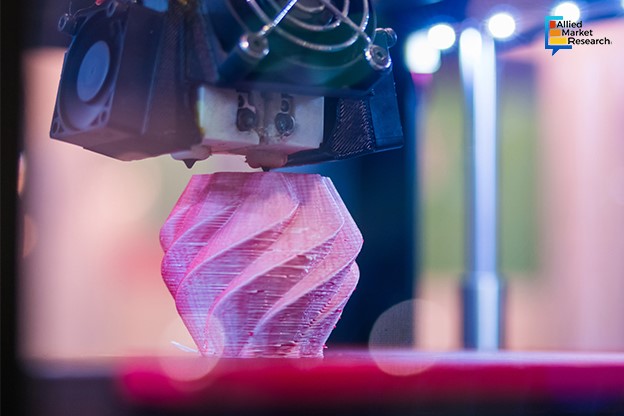How Is 3D Printing Transforming Construction Practices in the Industry 4.0 Era?

26 Nov
2024
Highlights:
- A brief on 3D printing in construction
- Exploring the diverse applications of 3D printing in the sector
- Promising partnerships of leading players in 2024
Construction practices have evolved significantly in the last few years, focusing on improving efficiency and sustainability. 3D printing technology has emerged as a promising advancement in this field, revolutionizing the ways building infrastructures are created. It has introduced faster construction times, innovative designs, and brought eco-friendly building practices.
What is 3D printing in construction?
3D printing, also called additive manufacturing, is a cutting-edge process of developing three-dimensional objects from computer-aided design models. It runs on a concept known as layer-by-layer construction. This means, the technology helps builders to create an object by adding materials in successive layers. The 3D printing process starts with a digital 3D model which is designed with specialized CAD software. This model is further categorized into various thin horizontal layers to obtain a digital blueprint. These layers follow the instructions from the digital design and accordingly direct 3D printers to deposit materials, including concrete, metal, and other materials at each level.
Why is 3D printing beneficial for the construction industry?
The adoption of this modern technology has introduced numerous benefits, redefining the way buildings are designed and constructed. 3D printing has the potential to speed up the construction process significantly. It helps design intricate structures more easily compared to traditional methods, thereby reducing project timelines. Moreover, this advanced technique optimizes material usage and reduces waste generation. It leads to minimizing labor expenses and overall construction expenditures. With the growing focus on achieving sustainable goals, this technology helps utilize materials more efficiently and produce less waste. Some construction businesses have also started using eco-friendly materials with the help of 3D printing, thereby minimizing the significant environmental impact of construction.
How is 3D printing used in modern construction?
The 3D printing construction market has witnessed prominent growth in the last few years due to the increased use of these devices in prototyping, modeling, layering, and many more purposes in various construction activities. The industry is predicted to rise at a notable CAGR of 105.8% from 2024 to 2032. Prototyping is an important part of pre-construction planning. 3D printing helps streamline the prototyping process by constructing multiple prototypes in a short period. These prototypes further help builders observe the model and identify potential areas that have faults. They also enable engineers to ensure accurate measurements for estimating costs and timings for the project, helping them to improve the accuracy of cost estimation.
On the other hand, architectural modeling plays a major role in designing the creative and visual aspects of building plans. It allows architects to visualize attractive elements of the structure before they start building. 3D printers enable the quick creation of multiple models to access different design ideas.
Furthermore, these printers are widely used for additive welding. It is a method of manufacturing metal components for construction. This process is technically known as wire arc additive manufacturing. 3D printers weld various layers of metals to form a 3D structure. This method is mainly used for complicated welding jobs in a construction project, resulting in robust structural components that are well-suited for construction.
ABB Robotics’s pioneering move to advance 3D printing technologies
In January 2024, ABB Robotics, a leading supplier of industrial robots joined hands with Simpliforge Creations, a multidisciplinary technology & product development company. Through this collaboration, the companies aimed to promote the use of 3D printing technologies to build faster, safer, and sustainable structures. The enterprises plan to transform the construction industry across defense, industrial, commercial, and residential sectors. According to Subrata Karmakar, the president of ABB Robotics, 3D printing construction has the potential to make operations more flexible and efficient, while reducing construction waste, supply chain costs, and carbon footprints.
Endnote
3D printing in construction has significantly revolutionized construction activities with greater efficiency and sustainability. This innovative method has the potential to address several challenges associated with traditional building processes such as rapid construction of complicated structures with minimal waste. Furthermore, the rising demand for green buildings and the growing construction of commercial infrastructures such as hospitals, shopping malls, and complexes are the major factors expected to create new avenues of the industry in the coming period.
To get more insights into the emerging trends in 3D printing construction, feel free to reach out to our industry specialists here!

Koyel Ghosh
Author’s Bio- Koyel Ghosh is a blogger with a strong passion and enjoys writing in miscellaneous domains, as she believes it lets her explore a wide variety of niches. She has an innate interest in creativity and enjoys experimenting with different writing styles. A writer who never stops imagining, she has been serving the corporate industry for the last five years.
Avenue: Entire Library membership of Allied Market Research Reports at your disposal
- Avenue is an innovative subscription-based online report database.
- Avail an online access to the entire library of syndicated reports on more than 2,000 niche industries and company profiles on more than 12,000 firms across 11 domains.
- A cost-effective model tailored for entrepreneurs, investors, and students & researchers at universities.
- Request customizations, suggest new reports, and avail analyst support as per your requirements.
- Get an access to the library of reports at any time from any device and anywhere.
Related Post
-
How are Submarine Cables Transforming Global Connectivity with Enhanced User Experience?
-
Endoscopy Procedures: Transformations in Techniques and Applications
-
AI-Powered Video Analytics: How the Product Actually Works for enterprises
-
Painting Robots: Transforming Precision Coating and Creative Applications
-
Innovations in Pharmacovigilance Systems Advancing Patient Safety
-
Understanding Edge Security: Keeping Data Safe Near the Source
-
Exploring the Use and Advancements of 3D Laser Scanners in Professional Applications
-
Reinforcing Industrial Controls with Smarter Tools and Training








